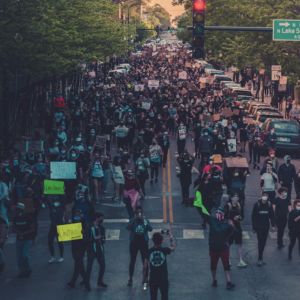Social Media Activism: Harnessing the Potential for Positive Change
In the digital age, social media has revolutionized the way we communicate and connect with the world. With its widespread reach and influence, social media platforms have become powerful tools for activism and social change. Social media activism refers to the use of online platforms to raise awareness, mobilize communities, and advocate for social, political, and environmental causes. This article explores the potential of social media activism to bring about positive change, highlighting its advantages, challenges, and effective strategies.
The Power of Social Media Activism
The platforms such as Instagram, YouTube, Facebook, and Twitter have billions of active users worldwide. This vast user base provides activists with an unprecedented opportunity to spread their messages far and wide. Unlike traditional forms of activism, social media allows for immediate and widespread dissemination of information, making it possible for marginalized voices to be heard.
One of the greatest strengths of social media activism is its ability to break down geographical barriers. Activists can connect with like-minded individuals across the globe, forming powerful networks and amplifying their impact. Online platforms enable individuals to share personal stories, images, and videos, creating emotional connections that fuel engagement and solidarity.
Moreover, social media enables rapid response to pressing issues. From mobilizing support for disaster relief efforts to organizing protests and boycotts, activists can swiftly rally support and create real-time awareness. Hashtags, in particular, have emerged as powerful symbols of social movements, fostering unity and facilitating conversations on key issues.
Challenges and Limitations
While social media activism offers immense potential, it is not without its challenges. One of the main criticisms is the “slacktivist” phenomenon, where individuals engage in minimal effort online without taking tangible actions offline. Liking, sharing, or retweeting a post does not always translate into meaningful impact. To address this, activists must strive to convert online support into offline action, whether it be attending protests, volunteering, or donating to relevant causes.

Another challenge is the algorithmic nature of social media platforms. Algorithms determine the content users see on their feeds, creating filter bubbles and echo chambers. This can limit exposure to diverse perspectives and hinder the potential for meaningful dialogue. Activists must be aware of these algorithms and employ strategies to reach broader audiences by engaging with diverse communities and collaborating across different platforms.
Additionally, misinformation and disinformation pose significant threats to social media activism. False narratives can spread rapidly, undermining the credibility of social movements. It is crucial for activists to fact-check information before sharing and to prioritize accuracy and authenticity in their messaging. Collaborating with reputable organizations and experts can help establish credibility and counter misinformation effectively.
Effective Strategies for Social Media Activism
To harness the potential of social media activism for positive change, several strategies can be employed:
1. Storytelling: Personal stories have the power to humanize complex issues and evoke empathy. Sharing authentic narratives and experiences can inspire others to join the cause and take action.
2. Visual Content: Eye-catching images and videos have a greater chance of capturing attention and being shared. Compelling visuals can convey messages effectively, making them essential tools for social media activism.
3. Collaboration: Building partnerships and alliances with other activists, organizations, and influencers can extend the reach and impact of social media campaigns. Collaborative efforts can amplify messages and generate greater engagement.
4. Call to Action: Encouraging specific actions, such as signing petitions, contacting elected officials, or attending events, can help translate online support into real-world change. Providing clear instructions and resources empowers individuals to contribute meaningfully.
5. Digital Advocacy Training: Educating activists on digital advocacy best practices, including online security, fact-checking, and responsible sharing, enhances the effectiveness and credibility of social media activism.
Conclusion
Social media activism has transformed the landscape of advocacy and activism, offering unprecedented opportunities for positive change. By leveraging the power of social media platforms, activists can reach global audiences, build networks, and mobilize communities like never before. However, it is essential to navigate the challenges of slacktivism, algorithmic biases, and misinformation to maximize the impact of social media activism. By employing effective strategies and harnessing the potential of storytelling, visual content, collaboration, and calls to action, social media activists can drive meaningful change and shape a better future for all.









